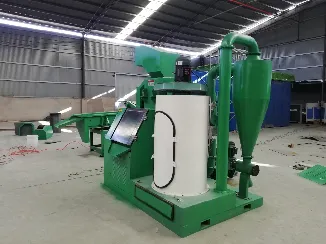

Okt . 10, 2024 11:27 Back to list
Disposing of electrical goods responsibly is an important aspect of environmental sustainability that many individuals overlook. As technology rapidly progresses, the lifespan of electrical goods, from old televisions to outdated smartphones, is decreasing. This raises a significant question how do we dispose of these items in an ethical and environmentally friendly manner?
Firstly, it is essential to understand that electronic waste, commonly referred to as e-waste, can be hazardous if not disposed of properly. Electronic items often contain toxic substances such as lead, cadmium, and mercury, which can leak into the environment and pose serious health risks. Therefore, direct disposal into regular trash poses a threat to both human health and the environment.
One of the most effective methods of disposal is recycling. Many communities have specific e-waste recycling programs in place. These programs are designed to collect, dismantle, and recycle old electronic devices in a way that minimizes environmental impact. Before disposing of your electrical goods, check with your local waste management authority or search online for nearby e-waste recycling centers. Many retailers also offer take-back programs for specific devices, especially for larger items like computers, TVs, and appliances.
Another alternative is donating functioning electrical goods to charities or organizations that can make use of them. Many non-profit organizations accept donations of used electronics, providing them with a second life while also benefiting those in need. Ensure that the items you donate are in working condition, as this increases the likelihood of them being used rather than discarded.

If neither recycling nor donating is an option, consider selling your old electrical goods. Platforms like eBay, Craigslist, and Facebook Marketplace offer avenues for individuals to sell used electronics. Not only does this reduce waste by extending the lifecycle of the product, but it can also provide you with some extra cash.
In some cases, manufacturers may have programs for responsible disposal or recycling of their products. Check the manufacturer's website for information related to take-back schemes or specific disposal instructions. This can help ensure that the devices are recycled correctly and the materials are reused.
In conclusion, disposing of electrical goods requires careful consideration to minimize environmental impact. Opt for recycling, donating, or selling your devices instead of simply throwing them away. By taking these steps, we can contribute to a more sustainable future and reduce the harmful effects of e-waste on our planet. Embracing responsible disposal methods not only protects the environment but also fosters a culture of sustainability, encouraging more people to think critically about their consumption habits.
Latest news
Troubleshooting Common Eddy Separator Problems
NewsJul.04,2025
The Role of Metal Recycling Plants in Circular Economy
NewsJul.04,2025
The Impact of Recycling Line Pickers on Waste Management Costs
NewsJul.04,2025
Safety Features Every Metal Shredder Should Have
NewsJul.04,2025
How Industrial Shredders Improve Waste Management Systems
NewsJul.04,2025
How Cable Granulators Contribute to Sustainable Recycling
NewsJul.04,2025